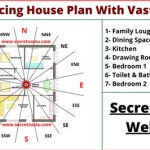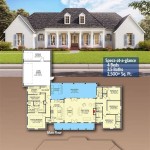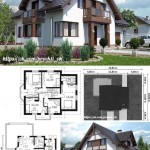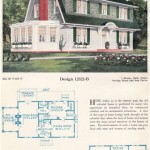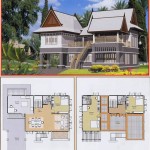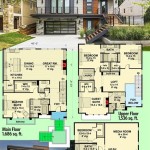Split Bedroom Floor Plans: Navigating the Pros and Cons
Split bedroom floor plans, also known as "split-level" or "bi-level" plans, offer a unique approach to home design. These plans feature a staggered layout, with different levels connected by stairs, creating distinct living spaces. While popular for their aesthetic appeal and potential for separation, split bedroom floor plans also present considerations that homeowners should carefully evaluate.
Advantages of Split Bedroom Floor Plans
Split bedroom floor plans offer several advantages that can enhance the functionality and appeal of a home:
Enhanced Privacy: One of the most significant advantages is the increased privacy it offers. The staggered levels create natural boundaries between different areas of the house, allowing for greater separation between family members or guests. This can be particularly beneficial for families with teenagers or individuals who prefer a quieter atmosphere.
Distinct Living Spaces: The different levels can be dedicated to specific functions, creating distinct living spaces. For example, the lower level might be ideal for a family room or play area, while the upper level could accommodate bedrooms and a quiet office. This separation enhances the flow of the home and allows for more defined areas for different activities.
Flexibility and Customization: Split bedroom floor plans offer greater flexibility in customizing the layout to suit the homeowner's needs. The staggered levels provide opportunities to create unique spaces, such as a loft, a reading nook, or a home office. This flexibility allows for personalization and adaptation to changing lifestyles.
Attractive Aesthetics: Split bedroom floor plans often boast a visually appealing and modern aesthetic. The staggered levels add dimension and interest to the home's architecture, enhancing the overall curb appeal and creating a distinct sense of style.
Disadvantages of Split Bedroom Floor Plans
While offering numerous advantages, split bedroom floor plans also come with some disadvantages that homeowners should consider:
Accessibility Concerns: The staggered levels can pose accessibility challenges, especially for individuals with mobility limitations. Navigating stairs can be difficult, limiting the accessibility of different areas of the home. This can be a significant consideration for families with young children or elderly members.
Increased Construction Costs: Split bedroom floor plans typically involve more complex construction processes, leading to higher construction costs. The additional stairs and levels require more materials, labor, and possibly specialized contractors, adding to the overall project expense.
Potential for Sound Carry: While aiming to separate spaces, the layout can sometimes result in sound carrying between levels, potentially disrupting privacy or quiet moments. This can be mitigated through careful planning and the use of sound-absorbing materials during construction.
Limited Square Footage: Despite a larger footprint, the staggered levels can sometimes result in a feeling of less usable square footage than a traditional single-level home. This is due to the space occupied by stairs and the division of the living area into multiple levels.
Key Considerations for Split Bedroom Floor Plans
Before deciding on a split bedroom floor plan, homeowners should carefully consider the following factors to make an informed choice:
Lifestyle and Family Needs: Assess your family's lifestyle and needs. Consider how much privacy you require, how often you entertain guests, and any potential mobility concerns.
Budget: Split bedroom floor plans generally have higher construction costs, so it's crucial to factor this into your budget. Consider the potential savings in the long run if the plan meets your needs for years to come.
Site Considerations: The lot size, shape, and slope are essential factors to consider. Ensure the floor plan can be accommodated within the constraints of the site and that the design complements the existing landscape.
Sustainability and Energy Efficiency: Factor in the environmental impact and energy efficiency of the design. Consider insulation, ventilation, and natural light utilization to create a comfortable and sustainable living environment.
A thorough analysis of these factors will help homeowners determine if a split bedroom floor plan aligns with their needs, lifestyle, and budget.

Country House Plans Best Ing 5558

Attractive 4 Bedroom Split House Plan 11774hz Architectural Designs Plans

5 Reasons To Pick Split Bedroom Designs The House Designers

One Story Split Bedroom House Plan 39225st Architectural Designs Plans

5 Reasons To Pick Split Bedroom Designs The House Designers

Split Bedroom Ranch Plan With A Large Great Room 3 Bedrooms 9233

Plan 59510nd Open Floor Three Bedroom Design Split Level House Plans Ranch

Contemporary Style House Plan 4 Beds 2 5 Baths 2495 Sq Ft 17 2798 Split Level Plans Floor

Split Bedroom Open Concept Ranch House Plans The Red Cottage

Split Bedroom Ranch Home Plan 11701hz Architectural Designs House Plans


